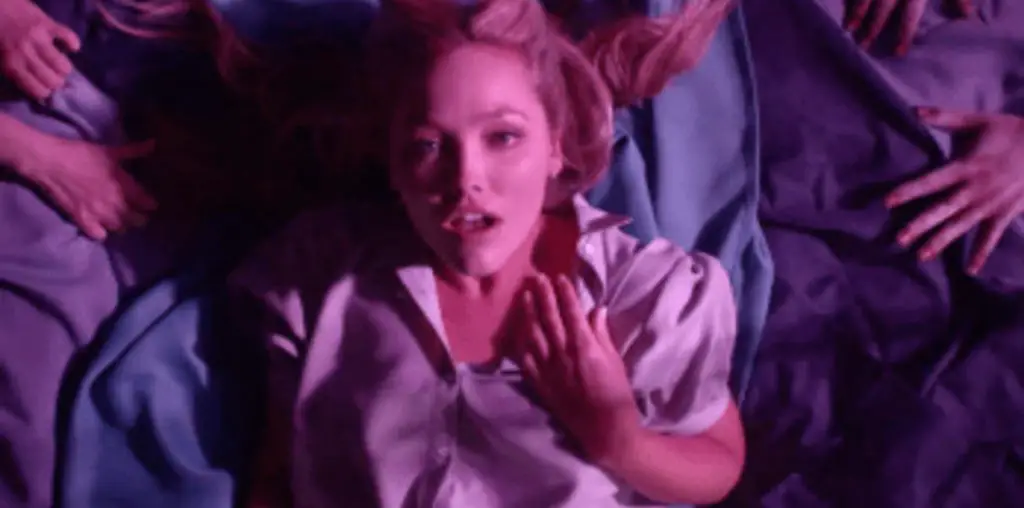
Every time a new technological development comes along, there’s always a stubborn handful of folks who dig in their heels and continue to do things the way they always have. This is especially true in the fad-a-minute world of film production, where I bet you dollars to doughnuts that I can find some guy tucked away in a dark room somewhere, cutting his 16mm work print on a Steenbeck. Whether it’s for reasons of cost, convenience, or simply out of habit, these old-school Luddites continue to exercise their finely honed crafts, regardless of the latest googol-gigabyte computer to hit the streets.
While any argument over which technique is better between, say, Disney’s hand-drawn animation or the computer-generated brand found in “Chicken Little” is inherently subjective, the one aspect nearly everyone should agree on is that the ticket buying/DVD renting public is better off having someone out there keeping the traditional crafts alive.
Enter veteran genre director Brett Piper. A longtime practitioner of the nearly lost arts of stop-motion animation and miniature photography, Piper has once again showcased his vintage techniques in “Shock-O-Rama.” A film that’s by turns campy, creepy, erotic and bloody, “Shock-O-Rama,” Piper’s third outing for ei Independent Cinema’s Shock-O-Rama Studios horror label, hearkens back to the pulp fiction magazines and lurid comic books of yore.
Just as Rebecca Raven (Misty Mundae), the most popular actress at a sleazy “B” movie studio, has decided she’s tired of the grind house grind, she learns that she’s been fired in favor of a younger, cheaper, and more buxom model. No sooner has Rebecca headed off for some much-needed R&R, however, do her oafish former bosses learn that her planned replacement is no longer available. Just days away from starting a new production, they embark on a frantic search through a stack of “B” movies to find a replacement for Rebecca’s replacement.
One possibility is Julie (Caitlin Ross) who stars in the retro space opera “Mecharachnia.” The feisty ex-girlfriend of junkyard owner Jedd Callahan (Rob Monkiewicz), Julie’s legs stretch from here to New Jersey…not that Jedd has much time to notice. That’s because when he’s not busy dodging his many creditors, he’s frantically trying to out-duel a couple of wiseacre space aliens who’ve crash-landed in the middle of his salvage yard while trying to outrun the extraterrestrial fuzz. Now they have Jedd and Julie pinned down inside Jedd’s office, and things get real serious when the alien critters construct a hulking robot from material they find in the scrap yard, and begin blasting away.
Or the execs could choose from any one of the nubile young lasses featured in the erotic gore-fest, “Lonely Are the Brain.” Here, a number of sultry test subjects are participating in a study on nightmares under the supervision of the seductively sinister Dr. Carruthers (Julian Wells). When one of the subjects dies in her sleep after a particularly harrowing lesbian encounter gone bad, Naomi (AJ Khan) and Monique (Sylvianne Chebance) launch an investigation into Dr. Carruthers, which leads them to the true source of their darkly erotic nightmares: a disembodied brain with a pathologically over-developed pleasure center.
Regardless of whom the studio honchos pick to replace Rebecca, she’ll have some big shoes to fill, as the outgoing super-starlet demonstrates in a slapstick standoff with a murderous zombie she’s accidentally awoken. It’s nothing that a little method acting — and a hefty chainsaw – can’t handle in a tongue-in-cheek encounter that brings a whole new meaning to the phrase “working vacation.”
“Shock-O-Rama” is clearly Piper’s most entertaining outing for the Shock-O-Rama label yet. The film-within-a-film framework treats the viewer to a range of genres and allows Piper and company to play with a wide menu of visual styles and moods. As usual, the cast is easy on the eyes, yes, but they also show here that they can do more than just read lines shed their clothes. (Misty Mundae, in particular, gives a wonderfully self-referential and self-deprecating performance as Rebecca.) Finally, Piper’s effects work, as usual, serves its purpose, treating us to visceral thrills like high-speed intergalactic police chases, hands-on open-heart surgery, and a pulsating, living brain, all on a budget.
Do Piper’s old-school effects always look “real?” Not always, but that’s not the point. The primary purpose of a genre film like “Shock-O-Rama” is to entertain us, whether that’s by scaring us, making us laugh or cringe in revulsion, giving us an action-packed thrill, or by turning us on. “Shock-O-Rama” does all of these things and more, which is a good thing, no matter what techniques were used to make it. – Merle Bertrand

